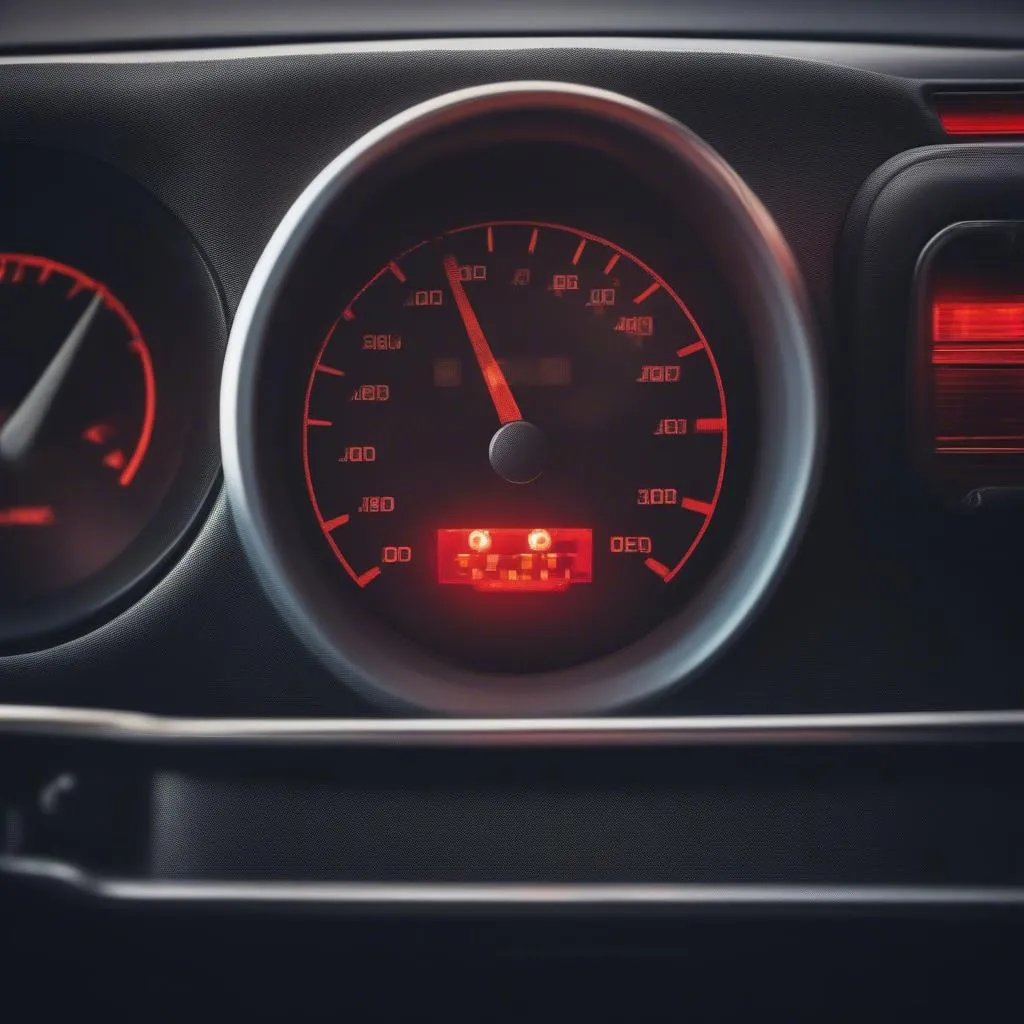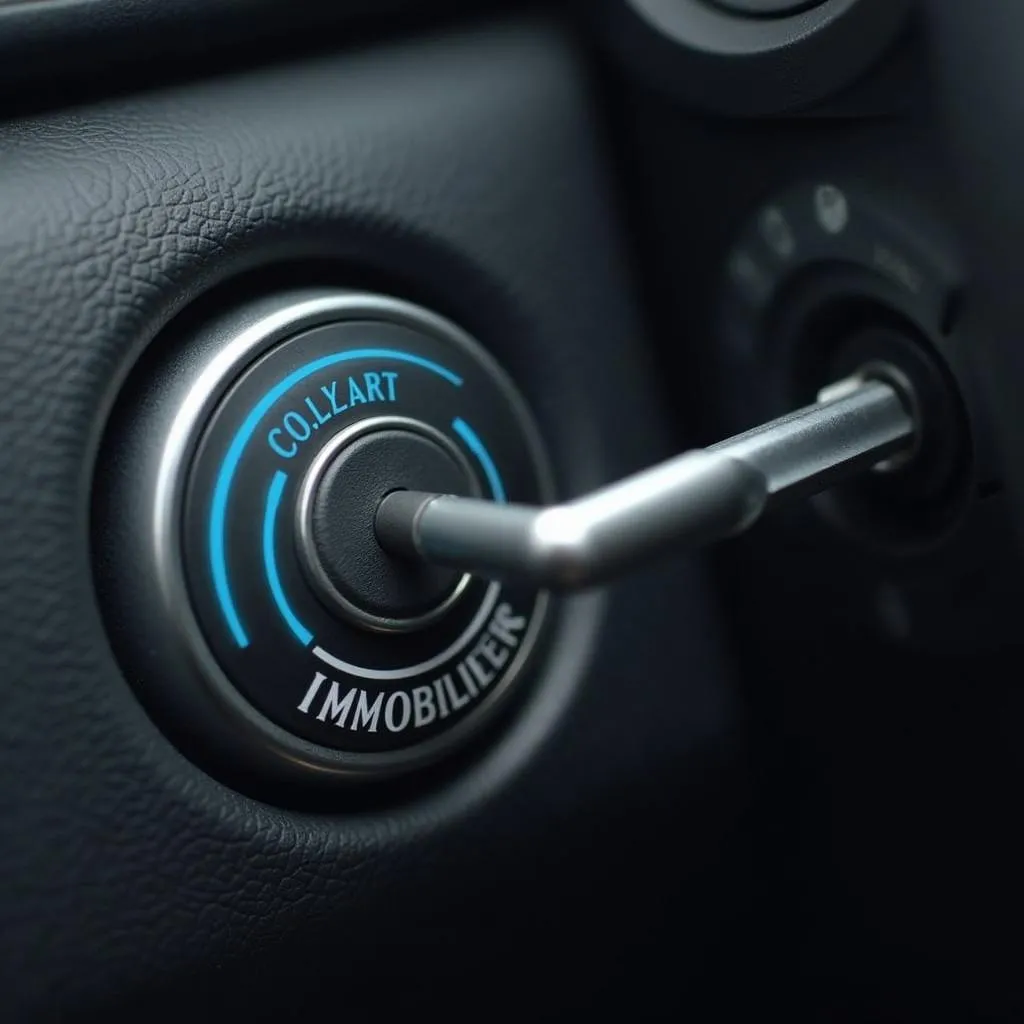The brake warning light on your dashboard is a crucial safety feature that should never be ignored. When illuminated, it signals a potential issue within your vehicle’s braking system that requires immediate attention. While the specific cause can vary, understanding the common reasons for a lit brake warning light can help you take appropriate action and ensure safe driving.
Common Causes of a Brake Warning Light
Let’s delve into some of the most frequent culprits behind a glowing brake warning light:
1. Low Brake Fluid Level
The most common reason for the brake warning light to illuminate is low brake fluid. Brake fluid is the lifeblood of your braking system, responsible for transmitting the force from your foot on the pedal to the brake calipers, which then squeeze the brake pads against the rotors to slow or stop the vehicle.
A leak in the brake lines or a worn-out brake caliper can lead to a drop in brake fluid levels.
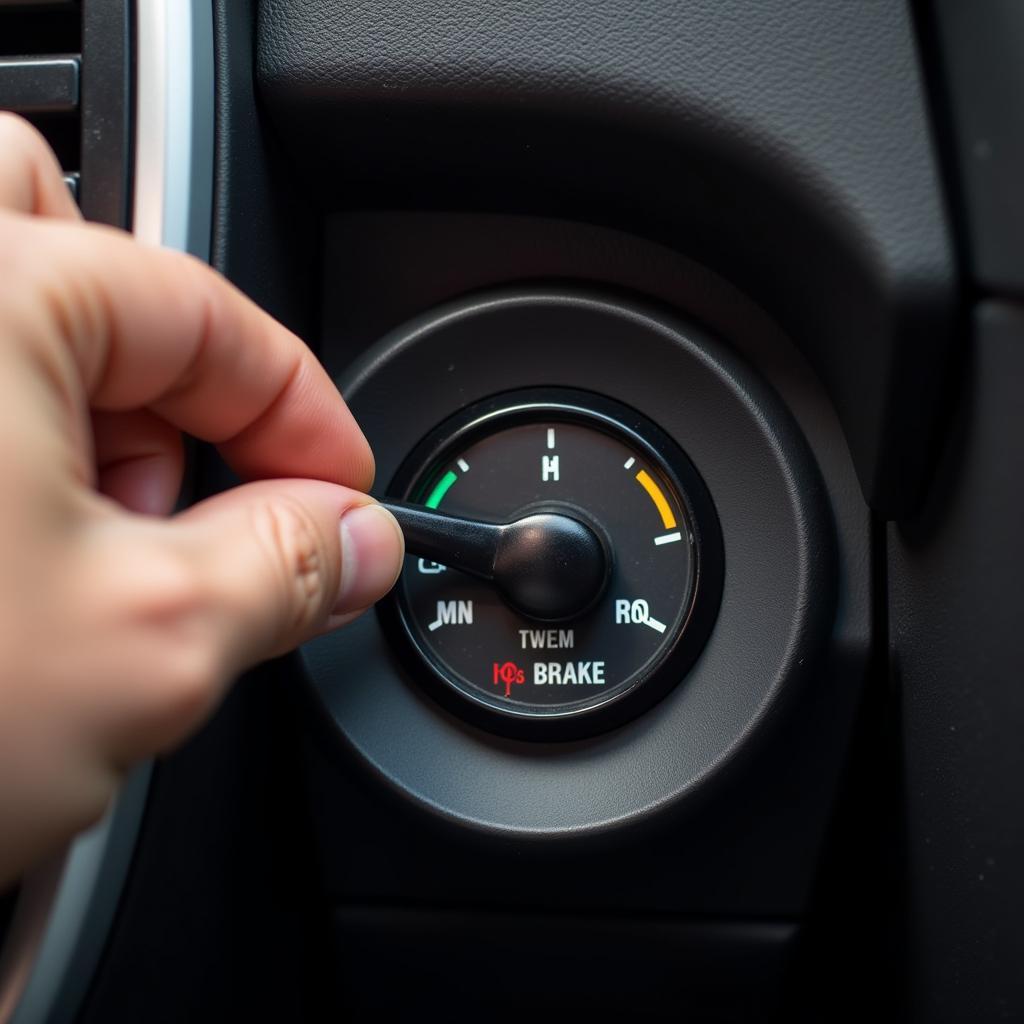 Checking brake fluid level
Checking brake fluid level
What to do: If you suspect a brake fluid leak, it is crucial to have your vehicle towed to a qualified mechanic immediately. Driving with a brake fluid leak is incredibly dangerous.
2. Worn Brake Pads
Brake pads are designed to wear down over time. When they become too thin, a sensor within the brake pad will trigger the brake warning light to come on. This serves as a reminder that your brake pads need replacing soon.
What to do: If your brake pads are worn, it’s essential to have them replaced as soon as possible. Driving with worn brake pads can significantly reduce your braking efficiency and increase the risk of an accident.
3. Faulty Brake Pad Sensor
In some instances, the brake pad sensor itself might be faulty or damaged. This can cause the brake warning light to illuminate even if the brake pads are still in good condition.
What to do: If you suspect a faulty brake pad sensor, a qualified mechanic can inspect the sensor and replace it if necessary.
4. ABS Issue
Modern vehicles are equipped with an Anti-lock Braking System (ABS), designed to prevent wheel lockup during hard braking. If there’s a malfunction with your ABS system, it can trigger the brake warning light.
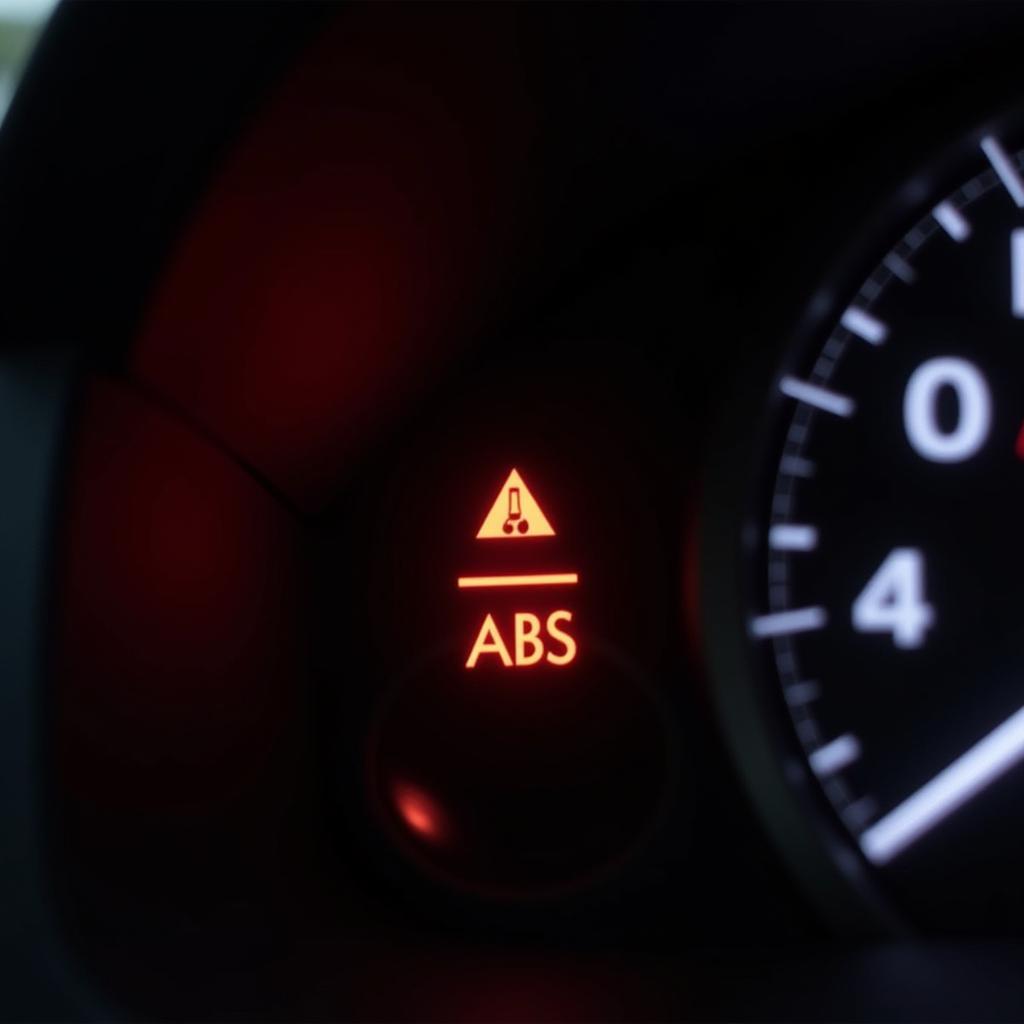 Car dashboard with ABS warning light on
Car dashboard with ABS warning light on
What to do: If you suspect an issue with your ABS, it’s crucial to have your vehicle diagnosed by a qualified mechanic to identify and address the specific problem.
5. Brake Master Cylinder Problems
The brake master cylinder plays a vital role in converting the mechanical force from the brake pedal into hydraulic pressure. A failing brake master cylinder can lead to various braking issues, including a lit brake warning light.
What to do: Like ABS issues, diagnosing and repairing a brake master cylinder problem requires the expertise of a qualified mechanic.
6. Emergency Brake is Engaged
It might seem obvious, but sometimes the simplest solution is overlooked. If you’ve left your emergency brake partially or fully engaged, it can cause the brake warning light to stay on.
What to do: Ensure your emergency brake is fully disengaged. If the light remains on after releasing the emergency brake, further inspection is necessary.
What to Do When Your Brake Warning Light Comes On
Ignoring a lit brake warning light can be incredibly dangerous. Here’s a step-by-step guide on what to do:
- Safely pull over: As soon as it’s safe, pull your vehicle over to the side of the road and come to a complete stop.
- Check your emergency brake: Ensure your emergency brake is fully disengaged.
- Check your brake fluid level: If you feel comfortable doing so, carefully check your brake fluid level. If it’s low, do not attempt to drive further.
- Call a mechanic: Contact a qualified mechanic to diagnose and repair the issue.
- Do not ignore the warning: Driving with a lit brake warning light puts you and other drivers at risk.
Preventing Brake Warning Light Issues
While some causes of a lit brake warning light require professional attention, there are steps you can take to prevent future issues:
- Regular Brake Inspections: Have your brakes inspected by a qualified mechanic at least once a year or as recommended by your vehicle manufacturer.
- Timely Brake Pad Replacement: Replace your brake pads as soon as they wear down to the recommended thickness.
- Address Brake Fluid Leaks Promptly: If you notice any signs of a brake fluid leak, such as fluid on the ground under your car or a spongy brake pedal, have your vehicle inspected immediately.
- Avoid Riding Your Brakes: Continuously riding your brakes can cause them to overheat and wear down faster.
Remote Diagnostics and Programming: A Modern Solution
In today’s technologically advanced world, remote diagnostics and programming offer a convenient and efficient way to address certain automotive issues, including some brake-related problems. By remotely accessing your vehicle’s onboard computer, qualified technicians can:
- Retrieve Diagnostic Trouble Codes (DTCs): DTCs provide valuable insights into the specific areas of your vehicle’s system that require attention.
- Perform Software Updates: Software updates can address known issues and improve the overall performance of your vehicle’s braking system.
- Offer Remote Troubleshooting: In some cases, technicians can guide you through basic troubleshooting steps remotely to resolve minor issues.
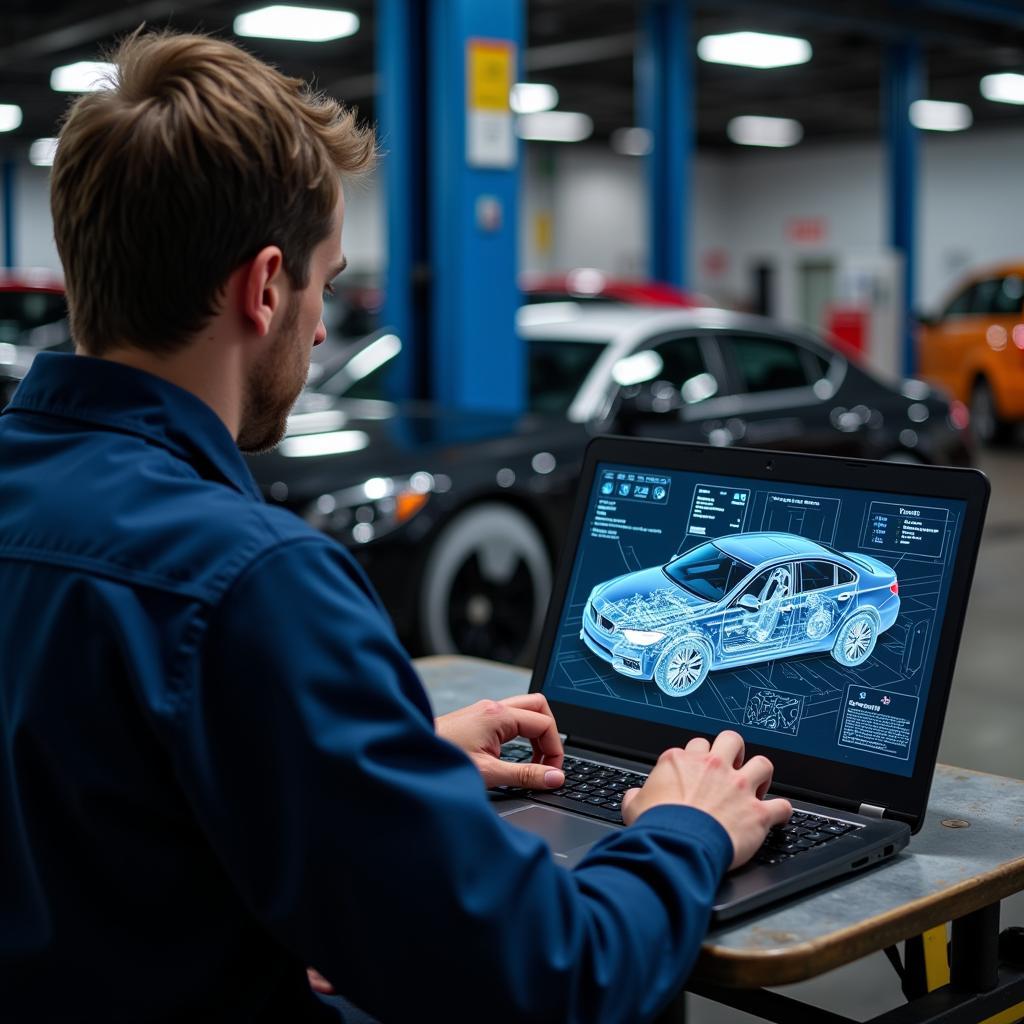 Mechanic using a laptop for remote car diagnostics
Mechanic using a laptop for remote car diagnostics
However, it’s crucial to remember that remote diagnostics and programming have limitations. Not all brake problems can be diagnosed or resolved remotely. Physical inspection and hands-on repairs are often necessary to ensure the safety and reliability of your braking system.
Conclusion
A lit brake warning light is a serious signal that should never be ignored. By understanding the potential causes and taking appropriate action, you can ensure your safety and the well-being of other drivers on the road. If your brake warning light illuminates, prioritize safety by pulling over as soon as possible and contacting a qualified mechanic to diagnose and repair the problem. Remember, proactive maintenance and timely repairs are essential for a safe and enjoyable driving experience.
FAQs
1. Why does my brake warning light stay on?
If your brake warning light stays on even after releasing the emergency brake and checking the brake fluid level, it indicates a persistent issue with your braking system, potentially a faulty sensor, worn brake pads, or a problem with the ABS system. Seeking professional diagnosis is crucial.
2. Can I drive with my brake warning light on?
Driving with a lit brake warning light is highly discouraged and potentially dangerous. It signifies a potential problem with your braking system, which could lead to reduced braking efficiency or even brake failure.
3. How much does it cost to fix a brake warning light issue?
The cost of repair depends on the underlying cause. Simple fixes like topping off brake fluid or replacing a faulty sensor might cost less than addressing more complex issues like a failing brake master cylinder or ABS module.
4. How often should I check my brake fluid level?
It’s generally recommended to check your brake fluid level at least once a month or as part of your regular vehicle maintenance routine. Consult your owner’s manual for specific recommendations for your vehicle model.
5. Can remote diagnostics fix my brake warning light issue?
While remote diagnostics can be helpful in identifying certain brake-related problems, not all issues can be resolved remotely. Physical inspection and repairs by a qualified mechanic are often necessary to ensure the safety and reliability of your braking system.
6. What is the difference between the brake warning light and the ABS light?
While both lights relate to your vehicle’s braking system, they indicate different issues. The brake warning light typically signifies problems with the traditional hydraulic braking system, such as low brake fluid or worn brake pads. In contrast, the ABS light specifically indicates a malfunction with the Anti-lock Braking System.
7. Can I add brake fluid myself?
While it’s technically possible to add brake fluid yourself, it’s generally recommended to have a qualified mechanic handle this task. They can ensure the correct type and amount of brake fluid is used and check for any underlying leaks that might be causing the fluid level to drop.

